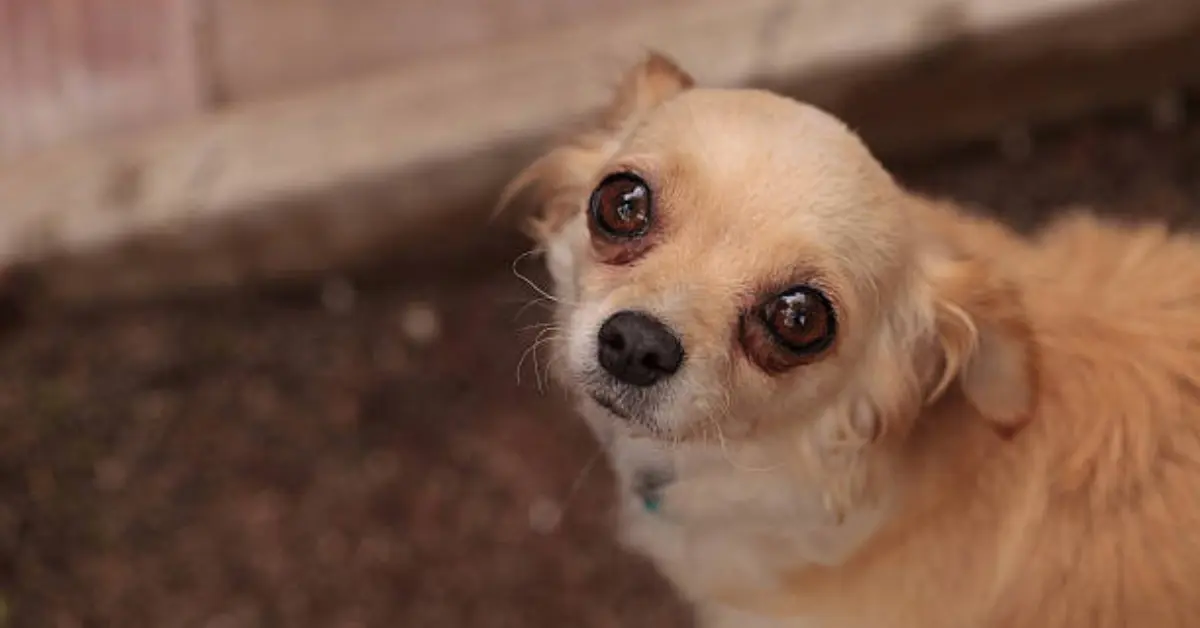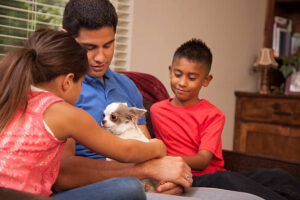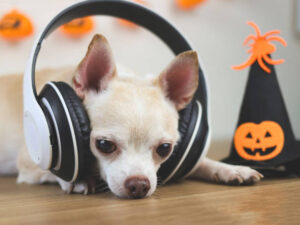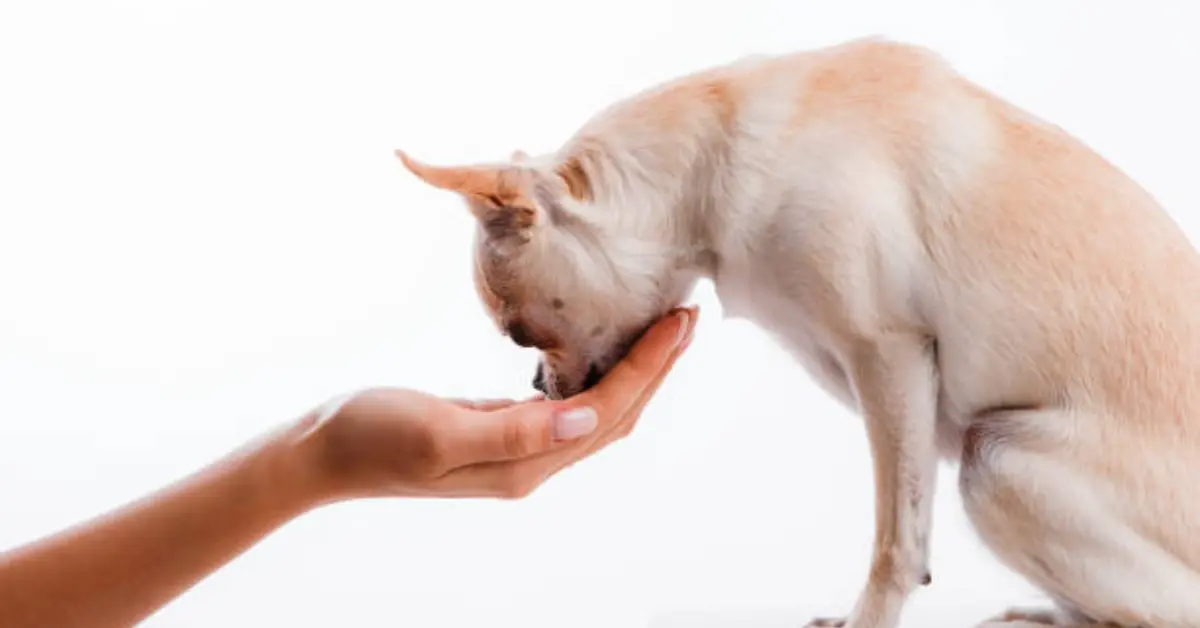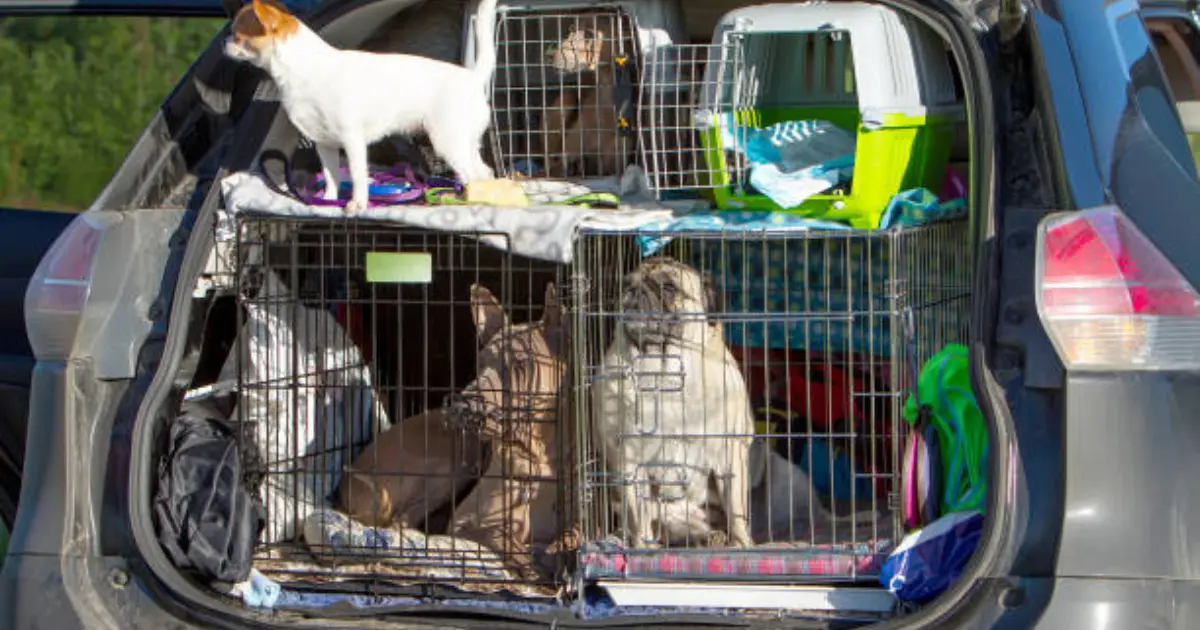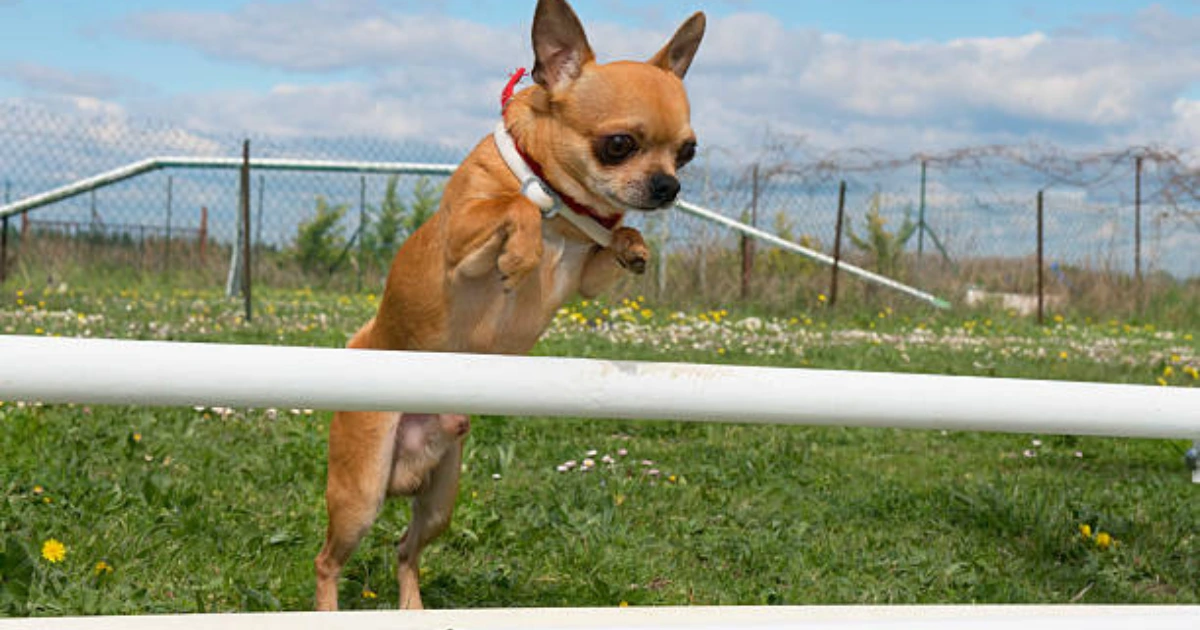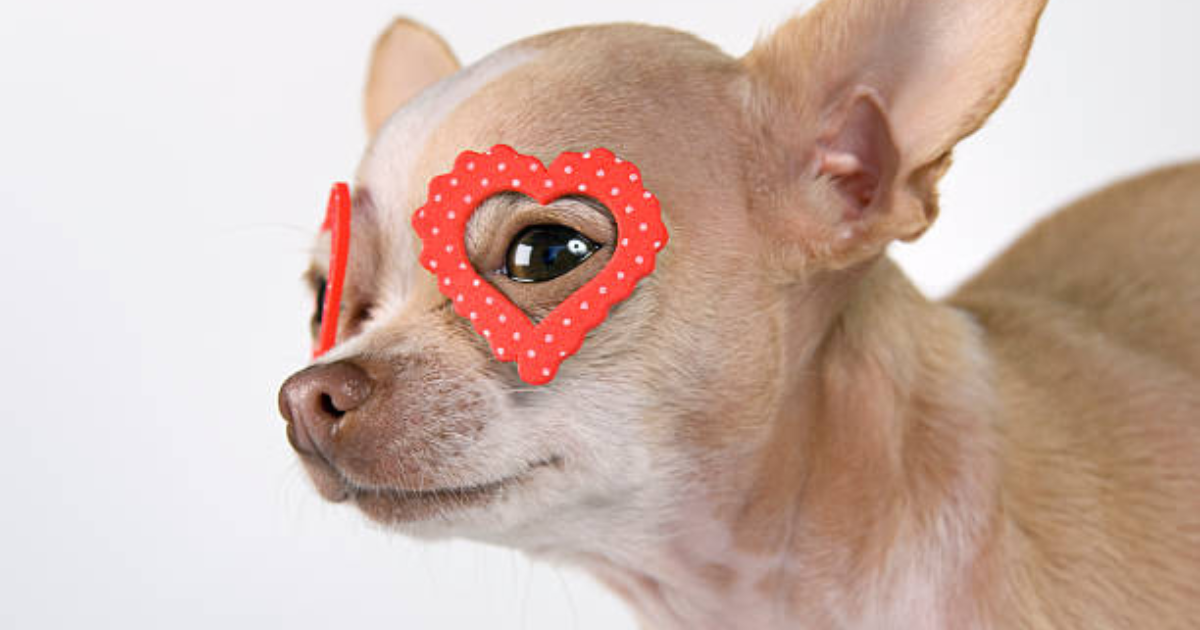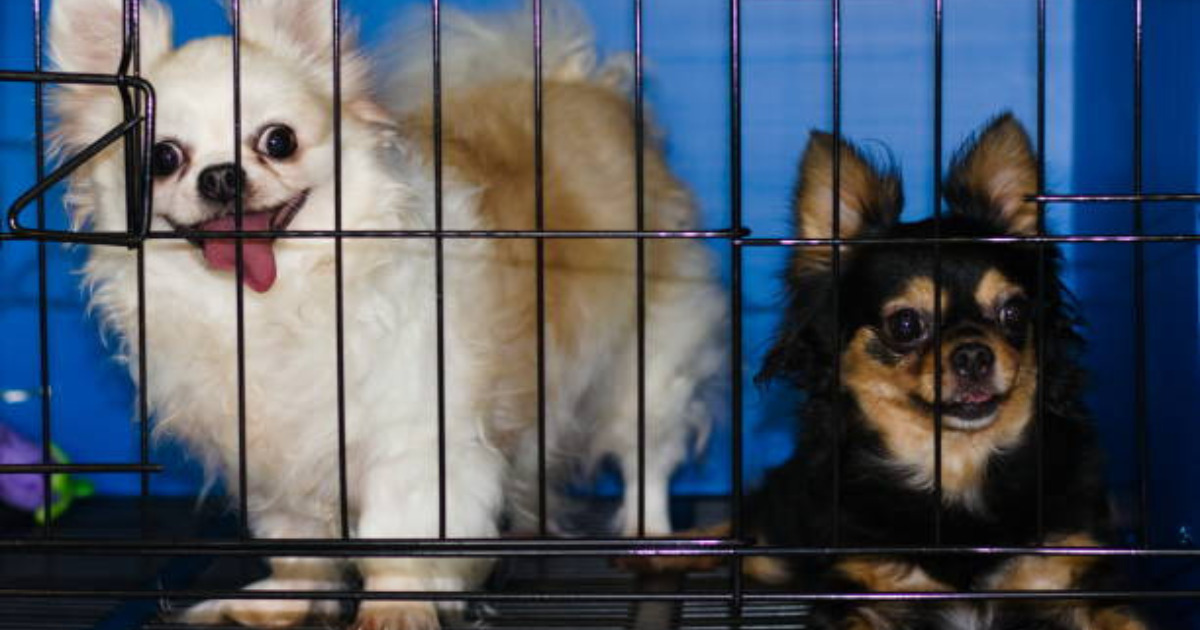Has your Chihuahua become particularly shy recently? Are they cowering under furniture and growling at the vacuum cleaner every time there’s thunder in the town? and you may wonder how to help a scared chihuahua.
Chihuahua puppies can be extremely sensitive, and because of their small stature, they don’t have much space to hide when they’re afraid. Don’t worry, though; with a few easy techniques, you can help your Chihuahua face their worries and soon they’ll be confronting life with courage!
Now that you’ve got a cup of coffee, let’s get started on how to assist your fearful Chihuahua to feel less anxious.
Advertisement
Signs of being scared
Cute Chihuahuas are capable of clearly expressing their feelings despite their small size. Naturally, it’s simple to spot when they’re scared, but did you know that occasionally, their anxiety might pass for something completely different? Pay attention to the small details so you don’t miss any important cues from your small four-legged pal.
Manifest indications that your Chihuahua is afraid:
- Shaking or trembling
- Prolonged barking
- Necessity
- Slouched over, head lowered
- Tucked in the tail
- Hair on the back and neck standing up
- Gesturing
- Flashing teeth
The Most Typical Worries Of Chihuahuas
Kids Phobia
Kids can be quite the challenge for Chihuahuas because of their quick movements and exuberant energy, especially those who tend to be frightened.
Children in particular may find it challenging to read the body language of a scared Chihuahua, which makes it challenging for them to know when to give their pet some space.
The Fix
If you don’t have children, you should be aware of how your Chihuahua behaves around small people. A straightforward fix? During these moments, keeping kids in a calm, safe place can help control their behavior. However, what if your children frighten them?
Remain calm and persistent with your Chihuahua. It’s a good idea to establish a “safe space” where they may spend time alone with the kids. Next, to discover a solution that works for everyone, call in a professional dog trainer with experience in positive reinforcement techniques.
Sounds Phobia
Even the most courageous Chihuahuas may cower at the sound of a dropped pan when it comes to unexpected loud noises.
But for those Chihuahuas who are often more easily
When scared, the response can be even more intense. They can bolt for cover at the sound of a simple noise, and they might not come out of hiding even when all is well.
The Fix
Modify your Chihuahua’s behavior to help it overcome its fear of loud noises. To progressively desensitize your Chihuahua, identify the individual triggers and use a recording of the noise; this will be a treat for them! Pay attention to your Chihuahua’s body language for indications of discomfort as you gradually turn up the music.
A white noise machine might be useful if you can’t stop hearing certain noises all the time. These practical suggestions will help your Chihuahua gain the self-assurance it needs to enjoy the world around it.
Strangers Phobia
When it comes to mingling with people who don’t look like their family, Chihuahuas can be very picky.
Men with beards, people wearing heavy coats, and people wearing caps are examples of this. Nevertheless, Chihuahuas might experience stress from basic public events or entertaining guests if they learn to mistrust people who are not members of their family.
The Fix
There is still hope if your Chihuahua is fearful of strangers. Desensitization and counter-conditioning are crucial. Determine your Chihuahua’s “buffer zone” first, then have the stranger approach from a distance.
Serve some delicious snacks to your Chihuahua while the stranger is in view. Reduce the buffer zone and gradually extend the stranger’s stay.
Throughout the process, pay special attention to your Chihuahua’s body language to ensure that they maintain their composure and assurance. You can train your Chihuahua to be a social butterfly with patience and time!
Other Pets Phobia
It’s unfortunate but true that Chihuahuas, particularly shy ones, sometimes have trouble forming canine friendships. When interacting with their furry counterparts, Chihuahuas may feel uncertain and afraid if they haven’t had the appropriate socialization and language training.
The Fix
It takes time, tolerance, and understanding to help your shy Chihuahua gain confidence in the presence of other dogs.
For the sake of your Chihuahua’s comfort, gradually introduce them to other dogs by matching them with a patient and knowledgeable friend. After you’ve established a safe distance, progressively close that distance while keeping a close eye on their actions.
You should always end your introductions with something pleasant to prevent overwhelming your Chihuahua.
What Is Causing My Chihuahua’s Fear?
Pain
A fascinating finding when looking into the world of Chihuahuas is that timidity is not the cause of all fear-related actions. By avoiding personal contact, your Chihuahua may be attempting to conceal an undetected medical condition. But do not worry! In order to ascertain whether your little Chi is experiencing discomfort or is dealing with issues related to fear, your reliable veterinarian can offer some clarification.
Bad Experiences
Though the little Chihuahua may appear brave, some people can be affected negatively by a traumatic event for a long time. During a stroll, a single loud firecracker might set off a chain reaction of anxiety that lasts much longer than the initial panic.
Any loud noise, such as a car door slamming, can make Chihuahuas nervous, and they could stop walking in the vicinity of the occurrence. These puppies’ delicate minds emphasize how crucial it is to always keep them secure and comfortable.
Insufficient socialization
Although Chihuahua puppies are adorable as young animals, if they don’t receive enough pleasant experiences during the critical puppy socialization stage, they may develop fear issues. This stage, which lasts from 8 to 16 weeks, calls for lots of joyful interactions with their surroundings.
Sadly, Chihuahuas that skip this important phase could grow fearful of anything and everyone, including individuals wearing hats or even someone riding by on a skateboard. Therefore, throughout their early months, make sure your Chihuahua is exposed to lots of new, pleasant experiences if you want them to grow up to be fearless and self-assured.
Genetics
Did you know that certain Chihuahuas may have shy and tense personalities by nature? Not only is it their personality, but research has indicated that their scared behavior may also be influenced by their mother’s worry and their genetic makeup.
Therefore, if you’re thinking about adopting a Chihuahua, it’s crucial to recognize any potential fearfulness in them and to give them the time and affection they need to overcome it.
Various phases of life, various fears
3 to 4 Months
Puppies of the Chihuahua breed have a way of melting even the hardest hearts. However, did you realize that the fearlessness they exhibited as infants might swiftly give way to timidity? It’s accurate! A Chihuahua’s awareness of their surroundings is limited in the early weeks of life.
There are no problems when you pick them up or present them to new individuals. But when they get older—roughly three or four months old—they begin to really comprehend what’s happening. Everything can appear overwhelming at times. They flee for safety when they see the same car that before didn’t phase them. Observing this transition is both intriguing and even humorous!
Senior Chihuahuas
We frequently anticipate our Chihuahuas growing older and wiser as well as more laid back. They have, after all, gone around the block a few times. Well, not in every case. While some elderly Chihuahuas may indeed be laid back, others may feel more fearful or anxious due to a variety of problems.
These can include a lack of patience for noisy or chaotic environments, hearing loss, vision issues, or cognitive failure. Therefore, keep in mind that there might be more to an aging Chihuahua’s behavior than meets the eye the next time you observe them acting a little tense or wary.
How can I assist my Chihuahua in getting over their fears?
1. Address their worries on a daily basis.
By giving your Chihuahua enough attention each day, you may help them overcome their concerns and grow into confident puppies.
To truly see results, make sure to interact with your Chi at least three times a week, whether it’s through a fun game or a peaceful walk. Your Chihuahua will overcome their fears and flourish in all aspects of their life if you are patient and persistent with them.
2. Begin with a low level of exposure.
You should begin gently and gradually increase the level of assistance to help your small Chihuahua overcome their concerns. Don’t attempt to teach someone to drive on a busy highway right away if they are afraid of moving traffic.
Start on a quieter street with fewer cars going by, and gradually go to a little busier one. It’s okay to advance them to the following traffic intensity level after they’ve mastered the previous one for a week. It all comes down to practice, perseverance, and progressively boosting their self-confidence!
3. Give your Chihuahua access to their stressors
It can be scary to expose your Chihuahua to its triggers. Don’t worry, though; the secret is to ease them into it slowly.
They can develop their confidence and interest without feeling overpowered if you watch them from a distance. You can progressively get them closer as they feel more at ease and demonstrate that they have nothing to be afraid of. It all comes down to giving your Chihuahua a happy, stress-free introduction experience.
4. Begin with brief encounters
It can be difficult to help your anxious Chihuahua overcome their worries, but it’s crucial to start small. The early sessions should just take a few minutes, so don’t expect to observe changes after long, tiring sessions. Build up gradually, adding five more minutes per week, until your Chihuahua is confident enough to face their concerns.
5. How to use body language to help your shy Chihuahua
This way of training your Chihuahua is like telling everyone to be quiet. To keep your Chihuahua from getting scared, you’ve decided to be cool and quiet.
When it comes to your Chihuahua, body language is very important. It’s best not to bend over to pet them because they are so small. You should instead get down on their level, which means getting on your knees. This will help your Chihuahua feel more at ease, and it won’t seem like too much of an aggression to it.
Also, try not to make eye contact. If your dog is making you mad, try staring at their ears or paws instead of their eyes.
6. Reward
Reward your Chihuahua when they face their concerns head-on to help them feel more confident. Treats should be readily available in an easy-to-access, sealed bag so that you don’t have to search for them later. Prove to your Chihuahua that courage pays off with tasty treats!
7. Help your Chihuahua be sure of itself
You need to show your little Chihuahua that there’s nothing to be afraid of if you want them to get over their fears. They are very good at reading their owners’ feelings, so if you’re worried or nervous about something, they will be able to tell from the way you move and look.
As you train your Chihuahua, it’s important to stay calm and not respond to any sounds or actions that your dog might make out of fear. Your Chihuahua will learn to get over their fears by watching how confident you are and acting like everything is fine.
YOU MAY ALSO LIKE:
How to Socialize Your Chihuahua Puppy
Small Dog Syndrome In chihuahuas – What is it? How do To prevent it?
Advertisement

